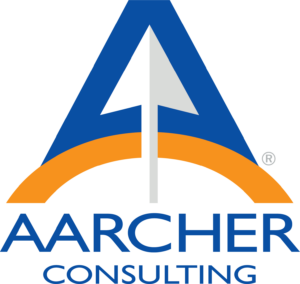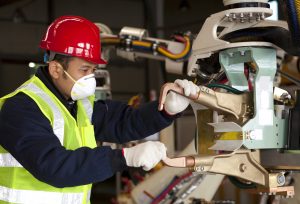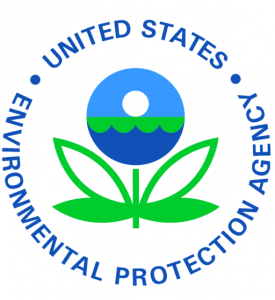Researchers in the United States and across the world are learning new information about COVID-19 every day. On July 9, the World Health Organization (WHO) announced that airborne transmission of SARS-CoV-2, the virus that causes COVID-19, in indoor spaces, especially those that are crowded and poorly ventilated, could be possible. WHO and other public health officials haven’t conducted sufficient research to conclude that the virus is “airborne.”
The CDC and OSHA have issued guidelines for workplaces preparing to reopen. The organizations continue to update their guidelines as more information about SARS-CoV-2 becomes known. Safety organizations, including the American Society of Safety Professionals (ASSP) and the National Safety Council (NSC), have also put together return to work resources.
The NSC cautions that “business owners should reopen when they’re ready—not necessarily because they can.” Facilities should only open if they can put proper social distancing and sanitation procedures in place to keep all staff safe.
As your organization plans to reopen, implement these protocols to ensure your employees return to the workplace safely:
1. Continue to provide remote work options for high-risk employees when possible. The CDC recommends providing teleworking options for staff members who are at risk of severe illness, including older employees and those who have underlying medical conditions.
2. Make design and layout changes to your facility to encourage safe practices. Your facility should be set up so staff members are able to maintain social distancing of 6 feet from each other. This may require moving workstations to ensure this setup is possible. If social distancing isn’t an option, you must install transparent shields or other physical barriers.
Additionally, the NSC recommends upgrading your facility with certain items to keep staff safe. Employers should consider installing door openers that are hands-free arm pull or foot operated and motion-detection sensors to use in place of switches.
3. Require your workers to wear masks to decrease the risk of disease transmission. On July 14, CDC Director Robert R. Redfield, MD, called for the universal use of cloth face coverings. Clearly communicate your workplace requirements for the use of cloth or N95 masks. Consider providing masks to your staff to ensure everyone has one.
4. Clean and disinfect facility areas often. Surfaces that are touched by people should be frequently cleaned with EPA-approved disinfectants against COVID-19 (List N). It’s also critical for employers to supply soap, alcohol-based hand sanitizer, tissues, and hands-free trash cans.
5. Use signs and markings to encourage safe practices. The NSC recommends that facilities use signs and floor markings to encourage social distancing in the workplace, as well as one-way directional flow in hallways. Additionally, employers should provide signs in all relevant languages with instructions on cough and sneeze etiquette, proper hand washing, and wearing masks.
As your organization transitions back to the workplace amid the COVID-19 pandemic, it’s essential that you follow proper protocols to ensure your staff is working in a safe environment and decrease the risk of their exposure to COVID-19.
Working with a firm that provides infection prevention services, like Aarcher Consulting, can ensure your employees make a safe return to the workplace and continue to stay healthy after your facility reopens. At Aarcher Consulting, we perform assessments of facilities to document the status of workplace conditions and systems affecting potential employee exposure to pathogens. Our credentialed team of Certified Industrial Hygienists led by Science Director, Infection Prevention Sarah Connolly, an infectious disease expert and former CDC staff member, will provide your workforce the peace-of-mind to resume and continue facility operations. Aarcher Consulting is currently scheduling facility assessments and infection prevention strategy development anywhere in the United States. Contact us to discuss your organizational needs.
Resource:
COVID-19: Keep Your Workplace Safe and Healthy During the Pandemic, Guy Burdick, EHS Daily Advisor.
 We are pleased to announce that James Abraham III has joined Aarcher Consulting as Environmental Protection Specialist, supporting ongoing operations and client services.
We are pleased to announce that James Abraham III has joined Aarcher Consulting as Environmental Protection Specialist, supporting ongoing operations and client services.
 Aarcher Consulting, an environmental consulting services firm for more than 25 years, announced today the promotion of AdriAnn Rode to Deputy Program Manager of the firm’s Denver Division operations. In this role, AdriAnn will support all aspects of ongoing operations and client services, including operational performance, personnel management, technical product quality, client satisfaction, and business development.
Aarcher Consulting, an environmental consulting services firm for more than 25 years, announced today the promotion of AdriAnn Rode to Deputy Program Manager of the firm’s Denver Division operations. In this role, AdriAnn will support all aspects of ongoing operations and client services, including operational performance, personnel management, technical product quality, client satisfaction, and business development. Aarcher Consulting is proud to have been selected to present at the prestigious 2021 EHS Operational Excellence Conference, hosted by the National Association for Environmental Management (NAEM), on March 10.
Aarcher Consulting is proud to have been selected to present at the prestigious 2021 EHS Operational Excellence Conference, hosted by the National Association for Environmental Management (NAEM), on March 10.
 As states begin to open back up amid the global coronavirus (COVID-19) pandemic, many organizations are starting to plan to return to the workplace. Each employer is ultimately responsible for workplace safety. Assessment of risk, careful planning, and smart communication during this transition will limit further disruptions to your operation. Our infection control specialists have organized some tips for preparing to return to the workplace:
As states begin to open back up amid the global coronavirus (COVID-19) pandemic, many organizations are starting to plan to return to the workplace. Each employer is ultimately responsible for workplace safety. Assessment of risk, careful planning, and smart communication during this transition will limit further disruptions to your operation. Our infection control specialists have organized some tips for preparing to return to the workplace: Aarcher is pleased to announce that Sarah Connolly, PhD, MPH, has joined our team as Science Director, Infection Prevention. Dr. Connolly is a senior epidemiologist and infection prevention expert experienced in infectious disease research and infection prevention. As a former public health associate with the Centers for Disease Control and Prevention, Dr. Connolly responded to infectious disease outbreaks and provided infection control guidance in a variety of settings. She regularly conducted contact-tracing and risk-assessment counseling to prevent the spread of diseases. She also has experience comparing local surveillance systems for influenza virus and writing state investigation protocols for infectious diseases.
Aarcher is pleased to announce that Sarah Connolly, PhD, MPH, has joined our team as Science Director, Infection Prevention. Dr. Connolly is a senior epidemiologist and infection prevention expert experienced in infectious disease research and infection prevention. As a former public health associate with the Centers for Disease Control and Prevention, Dr. Connolly responded to infectious disease outbreaks and provided infection control guidance in a variety of settings. She regularly conducted contact-tracing and risk-assessment counseling to prevent the spread of diseases. She also has experience comparing local surveillance systems for influenza virus and writing state investigation protocols for infectious diseases. On Dec. 19, the Trump administration unveiled its new Federal Action Plan to Reduce Childhood Lead Exposures and Associated Health Impacts.
On Dec. 19, the Trump administration unveiled its new Federal Action Plan to Reduce Childhood Lead Exposures and Associated Health Impacts.
 Craig Schwartz is an environmental management consultant with more than 20 years experience helping clients work toward their environmental compliance, performance, and risk management objectives. He is a Certified Hazardous Materials Manager (CHMM), Certified Professional Environmental Auditor (CPEA), and Certified Environmental Trainer (CET) who serves as both an AARCHER consultant and instructor for the Aarcher Institute of Environmental Training. Craig can be reached at
Craig Schwartz is an environmental management consultant with more than 20 years experience helping clients work toward their environmental compliance, performance, and risk management objectives. He is a Certified Hazardous Materials Manager (CHMM), Certified Professional Environmental Auditor (CPEA), and Certified Environmental Trainer (CET) who serves as both an AARCHER consultant and instructor for the Aarcher Institute of Environmental Training. Craig can be reached at